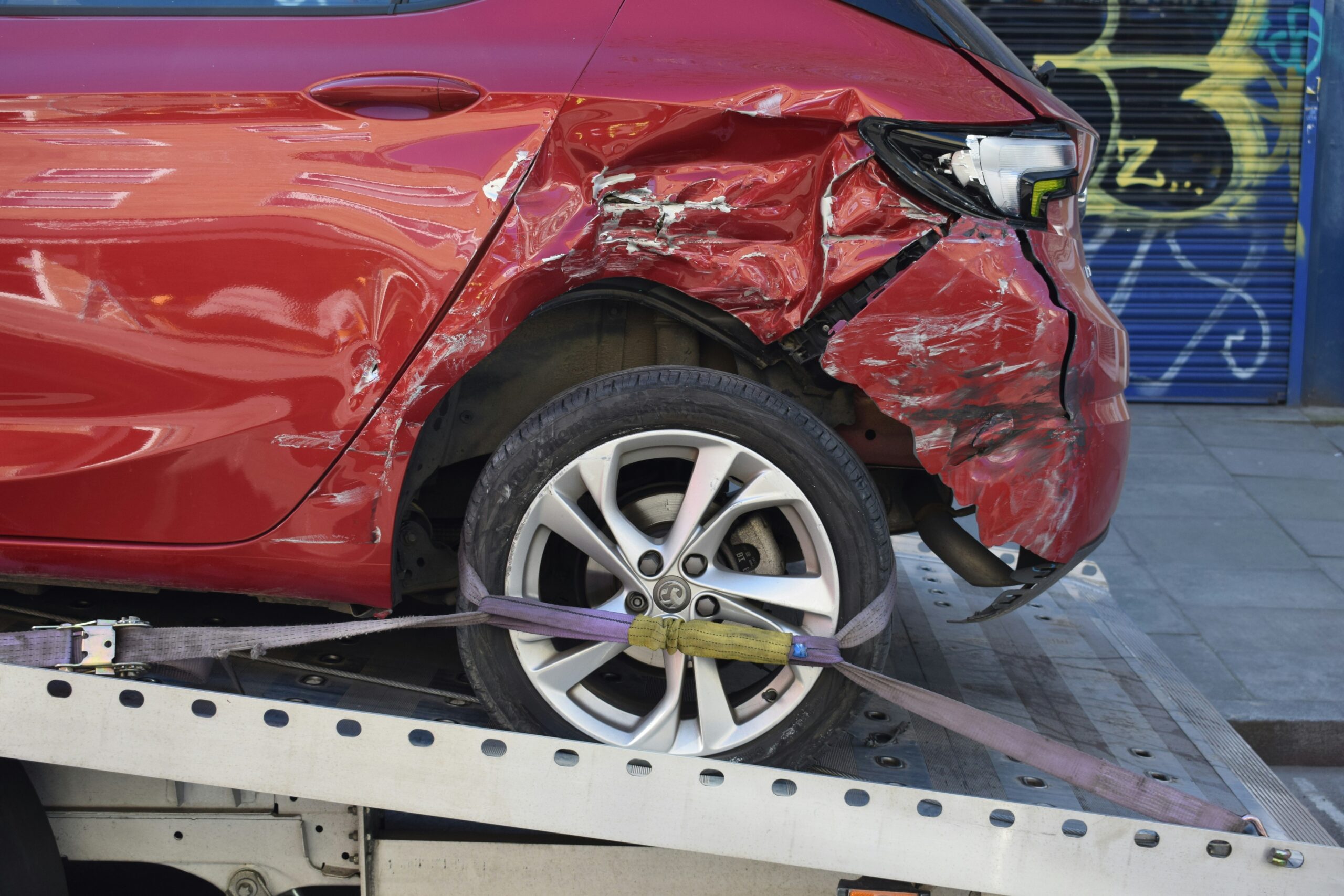If you are involved in an accident but were not at fault for the collision, you can recover damages and injuries through the third party’s liability car insurance. To get the most from your payout, make sure to document the scene using photos, witness statements, and video footage, if necessary.
Determining fault after an accident
Whether you live in a no-fault state or an at-fault state, fault after an accident is largely determined by your insurer, or the third party’s insurer. Once you file a claim either with the at fault driver’s insurance provider or your own, they will review the supplied information, such as police reports and witness statements, determine fault, and proceed with the claim.
Establishing fault after a crash is critical to ensuring that the not-at-fault party is properly compensated. When you’re found not at fault for a crash, you will file a claim according to your state’s laws, and receive a payout for any injuries or damages you sustained.
Learn more: What is an at-fault accident?
How your insurance works after a not-at-fault accident
Firstly, it’s always a good idea to report not-at-fault accidents to your insurance provider. Reporting ensures that you get timely help managing the claims process, recovering damages, finding repair shops, and maximizing your ultimate payout.
Liability insurance, collision coverage, and uninsured/underinsured motorist coverage may all come into play in your not-at-fault accident claim process. Here’s how insurance coverage works in not-at-fault accidents:
- I have liability coverage: If you’re the not-at-fault party, you won’t tap into this coverage at all. Instead, the at-fault party’s liability coverage will pay you for damages.
- I have collision coverage: You can choose to file against your own collision policy if your vehicle was damaged and you don’t want to wait for the official fault determination. However, this means paying an out-of-pocket deductible and filing a claim—although you can get that deductible back as a reimbursement via subrogation, once fault is assigned. You could also wait for the other party’s liability payment.
- I have UM/UIM coverage: You can tap into this coverage if the other driver didn’t have enough insurance to cover your losses.
Depending on the circumstances, you may need to consider legal options such as arbitration or representation from an experienced attorney to get the full settlement you deserve from the other person’s insurance company.
Your insurance rates may increase after a not-at-fault accident
Remember, it’s entirely possible for insurance premiums to go up for the not-at-fault driver because no-fault accidents go on your record. This is especially true in no-fault states, where premiums are already higher for added liability insurance requirements.
On average, drivers with a history of accidents pay 26% more for car insurance compared to those with a clean record—but this rate can change depending on your provider. Take a look at how your premium costs can differ with various providers after a not-at-fault accident.
| Insurance company | Average rate before accident | Average rate after accident |
|---|---|---|
| Allstate | $142 | $161 |
| Aspire | $130 | $178 |
| Clearcover | $98 | $116 |
| Dairyland | $219 | $258 |
| Gainsco | $160 | $199 |
| Mercury Auto | $110 | $139 |
| Nationwide | $115 | $128 |
| Progressive | $129 | $153 |
| Safeco | $118 | $125 |
| Travelers | $100 | $105 |
But just because your rate has increased, it doesn’t mean that you have to stick with it. Thankfully, there are several ways drivers with not-at-fault accidents can find cheaper car insurance—and one of them is with Jerry.
Using the Jerry app, drivers can compare customized quotes from some of the top providers in the nation. To help drivers lower rates even further, Jerry allows users to input any discounts they currently qualify for—such as good student or paid in full opportunities.
Protecting yourself—and your finances—after a not-at-fault accident
According to the CDC, unintentional injury in motor accidents is the 2nd biggest cause of death in America [2]. Here’s how to take action to protect yourself if you suffer an accident at the hands of another driver.
Short-term: How to document a not-at-fault accident
Immediately ask for contact information, driver’s license info, and auto insurance information from all involved parties. Take photos at the accident scene and call police to assist, if appropriate.
If you’re wondering how to prove you are not at fault in a car accident, the simplest answer is evidence. It’s smart to create a digital or physical space to keep all your accident-related documents organized.
- Within 12 hours: Document as much as possible, including writing your own account of the auto accident with notes about weather and traffic conditions. Reach out to witnesses.
- Within 24 hours: File the official police report.
- Within 48 hours: File the car accident claim with your own company even if you’re not at fault, including your documentation.
- Within three days: Go to the doctor to get checked out. This can be valuable evidence when disputing false claims.
During this time, stay available. Expect contact from your insurance adjuster for more details about the accident. Also continue to document any losses, injuries, or other impacts from the accident, including pain and suffering.
Medium term: Payouts, repairs, recovery in not-at-fault accidents
Assigning fault can take time. Remain patient and continue to cooperate with the insurance company.
- Within one week: Your insurance company will likely continue its investigation into the accident.
- Within two weeks: Follow up with your insurance company if you haven’t heard back about the status of your claim.
- Within one month: Expect updates from your insurance company regarding the resolution of your claim, arbitration, or negotiations about a settlement with the at-fault party’s insurer.
- Within two months: If a settlement has been reached, your insurance company will finalize the details and issue any payments owed to you. The claim should now be resolved.
This is also a good time to consider your legal options. If you are facing challenges with your insurance company or the at-fault party’s insurer—or if your property damages and injuries are egregious—get legal advice. Many car accident attorneys offer a free consultation. If your accident case goes to court, a judge or jury may determine the outcome.
Note that your right to sue depends partially on your state’s laws.
Long term: Future impacts of not-at-fault accidents
After your insurance payout, take the opportunity to review your insurance policy and consider any adjustments or updates based on your experience with the claim process.
Keep in mind that medical issues can also crop up unexpectedly. See a doctor if you suspect it’s related to the incident. If you encounter ongoing medical expenses or disputes during the claim process, don’t hesitate to seek legal advice to protect your rights and interests.
How long does a not-at-fault accident stay on your record?
Three to five years. In the coming months and years, do continue to monitor your rates and consider switching if your new premium increases significantly.
How state laws come into play with not-at-fault accidents
Negligence laws vary by state. These laws affect how fault is determined—and fault affects payout and ability to sue, depending on your degree of fault or negligence.
In some states, even 1% fault is enough to eliminate your right to file. For instance, say you were rear-ended but one of your tail-lights was out. One could argue that you were partially at fault for this accident.
Here’s how to determine the best path forward depending on your state.
- Pure comparative negligence: Each party is responsible for damages in proportion to their degree of fault, regardless of how much they contributed. If the other driver caused 60% of the damage, you could get 60% of your damage paid by them—but they could sue you for 40% of the damage you supposedly caused.
- Modified comparative negligence: Damages are only awarded if your fault does not exceed a certain threshold, typically 50% or 51%. If you’re at least 50% guilty, you can’t collect any damages.
- Contributory negligence: You can’t recover any damages if you contributed to your own injury in any way.
To assign fault, the insurance company will make a final determination based on police reports, witness statements, documentation, and other insurance investigations. Remember that there are time limits for filing a lawsuit. Take prompt action.
FAQ
-
Do not-at-fault accidents affect insurance?
-
Do not-at-fault accidents go on your record?
-
How does insurance work in a car accident when it’s not your fault?
-
What is no-fault insurance?
-
How to deal with an at-fault driver’s insurance company?

Bonnie Stinson is an insurance writer with 8+ years of experience as a content writer. They specialize in making complex topics like insurance and technology easy to understand. Bonnie has written over 1,300 articles to help people become confident car owners, from how to choose the right car and build a car insurance policy to dealing with stressful situations like car accidents and unexpected repairs. Before joining Jerry’s editorial team, Bonnie worked as a digital media strategist and user experience researcher, producing content for Furnishr, STACKEDD Magazine, InfinityCore Health, and the global non-profit Giraffe Heroes.

Kianna Walpole is an insurance writer and editor with a comprehensive background in consumer behavior and online publishing. With experience in car insurance, maintenance, and repair, she is dedicated to building informative content that helps customers reduce costs while achieving the best service. Prior to joining the Jerry editorial team, Kianna worked as a junior editor in the content marketing industry, using consumer data and key insights to create and edit content for an array of large-scale clients in the real estate, cybersecurity, and healthcare industries.




